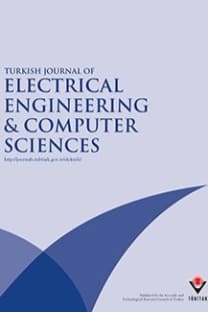The effect of heat on the metallurgical structure and B-H characteristic of (stator) armature with iron-silicon alloy in electric machines
Heat effect on material, magnetic (B-H) characteristic, microstructure of material, removal of the burned windings.
The effect of heat on the metallurgical structure and B-H characteristic of (stator) armature with iron-silicon alloy in electric machines
Heat effect on material, magnetic (B-H) characteristic, microstructure of material, removal of the burned windings.,
___
- A.H.Bonnett. “Operating temperature considerations and performance characteristics for IEEE 841 motors.” IEEE Transactions on Industry Application, Vol. 37, No.4, pp. 1120-1131, 2001.
- A. Dalfes. Experiments of Electrical Measurement Laboratory, 4th edition. Istanbul: Matbaa Teknisyenleri Basımevi, E. J. Thompson. The Magnetic Properties of Materials. London, 1967.
- H. N. Bertram, Z. Jin, V. L. Safonov. “Experimental and theoretical studies of thermal magnetization noise in GMR heads.” IEEE Transactions on Magnetics, Vol. 38, pp. 38-44, 2002.
- G. Gogue. Motor design advancement using NdFeB magnets. Bebanon, Ohio: Motorsoft Company, 2000. Available: www. motiontraining.com/gogue/Lesson%201/page18.htm J. S. Barker. “Demonstrations of geophysical cesses of the earth’s interior.” Presented at the NE section GSA Meeting, March, www.geol.binghamton.edu/faculty/barker/demos/demo13.htm applicable to the properties and Available:
- ——, A critical comparison of ferrites with other magnetic materials. Magnetics, Division of Spang & Company, Butler-PA, pp. 01-10, 2000. Available: www.mag-inc.com
- G. S. Avadhani. “Dynamic materials modeling technique for optimization of warm workability of armco iron and binary iron alloys.” Proc. Third International Conference on Mathematical Modeling and Computer Simulation of Materials Technologies (MMT-2004 ), Ariel, September, 2004.
- N. Tsuya, K. I. Arai, K. Ohmori, H. Shimanaka, T. Kan. “Ribbon-form silicon-iron alloy containing around 6% silicon.” IEEE Transactions on Magnetics, Vol. Mag-16, No.5, pp. 728-733, 1980.
- Y. Birol, N. Parkan, O. C¸ akır. “Y¨uksek Silisli Elektrik C¸ eliklerinin ¨Uretiminde Hızlı Katıla¸stırma Uygulaması.” Proceedings of the 9thInternational Metallurgy and Materials Congress, ˙Istanbul, Turkey, June 1997.
- K. Honma, T. Nozawa, H. Kobayashi, Y. Shimoyama, I. Tachino, K. Miyoshi. “Development of Non-Oriented and Grand-Oriented Silicon Steel.” IEEE Transactions on Magnetics, Vol. 21, No.5, pp. 1903-1908, 1985.
- A. J. Moses. “Electrical Steels: Past, Present and Future Developments.” IEE Proceedings, pp. 233-245, 1990.
- C. Lall. Soft Magnetism Fundamentals for Powder Metallurgy and Metal Injection Molding. New Jersey: Metal Powder Industries Federation, 1995.
- B. D. Cullity. Introduction to Magnetic Materials. Reading, MA: Addison-Wesley, 1972.
- A. Tekin, Material Science II, Istanbul Technical University, Istanbul, 1980.
- ISSN: 1300-0632
- Yayın Aralığı: Yılda 6 Sayı
- Yayıncı: TÜBİTAK
Nonlinear dynamic analysis of mitral valve doppler signals: surrogate data analysis
k-anonymity based framework for privacy preserving data collection in wireless sensor networks
Stator resistance estimation using ANN in DTC IM drives
Mustafa AKTAŞ, H. İbrahim OKUMUŞ
Stochastic stability of the discrete-time constrained extended Kalman filter
Levent ÖZBEK, Esin KÖKSAL BABACAN, Murat EFE
İhsan PEHLİVAN, Yılmaz UYAROĞLU
Relativistic electromagnetism in rotating media
A power quality monitoring system based on MATLAB Server Pages
Bülent VURAL, Ali KIZIL, Mehmet UZUNOĞLU
Robust multimedia watermarking: Hidden Markov model approach for video sequences
Artificial neural network based chaotic generator for cryptology
